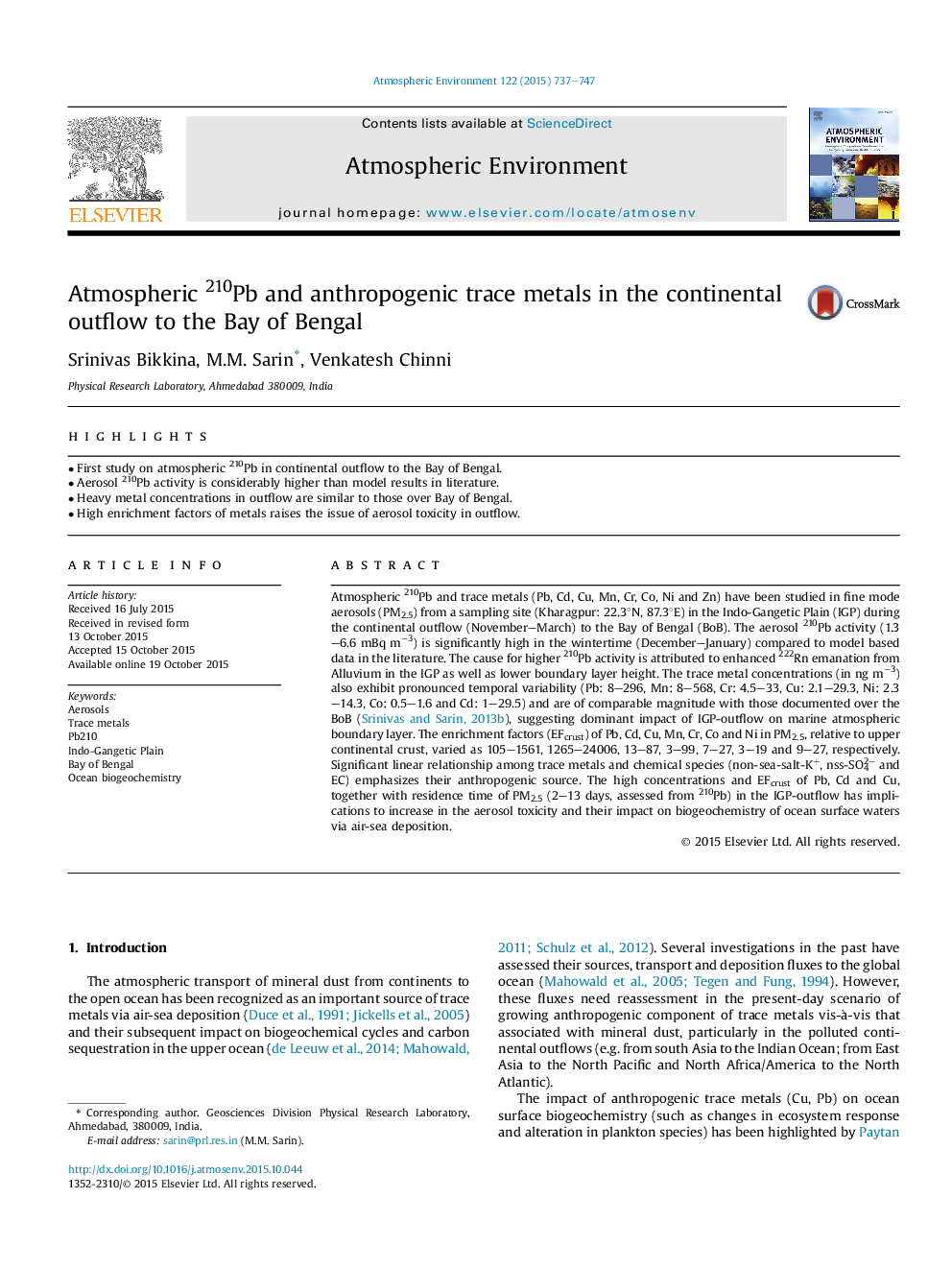| Article ID | Journal | Published Year | Pages | File Type |
|---|---|---|---|---|
| 6337094 | Atmospheric Environment | 2015 | 11 Pages |
Abstract
Atmospheric 210Pb and trace metals (Pb, Cd, Cu, Mn, Cr, Co, Ni and Zn) have been studied in fine mode aerosols (PM2.5) from a sampling site (Kharagpur: 22.3°N, 87.3°E) in the Indo-Gangetic Plain (IGP) during the continental outflow (November-March) to the Bay of Bengal (BoB). The aerosol 210Pb activity (1.3-6.6 mBq mâ3) is significantly high in the wintertime (December-January) compared to model based data in the literature. The cause for higher 210Pb activity is attributed to enhanced 222Rn emanation from Alluvium in the IGP as well as lower boundary layer height. The trace metal concentrations (in ng mâ3) also exhibit pronounced temporal variability (Pb: 8-296, Mn: 8-568, Cr: 4.5-33, Cu: 2.1-29.3, Ni: 2.3-14.3, Co: 0.5-1.6 and Cd: 1-29.5) and are of comparable magnitude with those documented over the BoB (Srinivas and Sarin, 2013b), suggesting dominant impact of IGP-outflow on marine atmospheric boundary layer. The enrichment factors (EFcrust) of Pb, Cd, Cu, Mn, Cr, Co and Ni in PM2.5, relative to upper continental crust, varied as 105-1561, 1265-24006, 13-87, 3-99, 7-27, 3-19 and 9-27, respectively. Significant linear relationship among trace metals and chemical species (non-sea-salt-K+, nss-SO42â and EC) emphasizes their anthropogenic source. The high concentrations and EFcrust of Pb, Cd and Cu, together with residence time of PM2.5 (2-13 days, assessed from 210Pb) in the IGP-outflow has implications to increase in the aerosol toxicity and their impact on biogeochemistry of ocean surface waters via air-sea deposition.
Related Topics
Physical Sciences and Engineering
Earth and Planetary Sciences
Atmospheric Science
Authors
Srinivas Bikkina, M.M. Sarin, Venkatesh Chinni,
